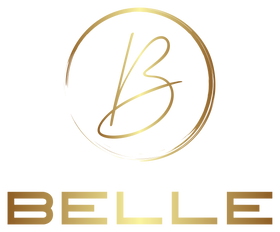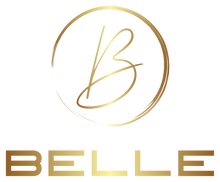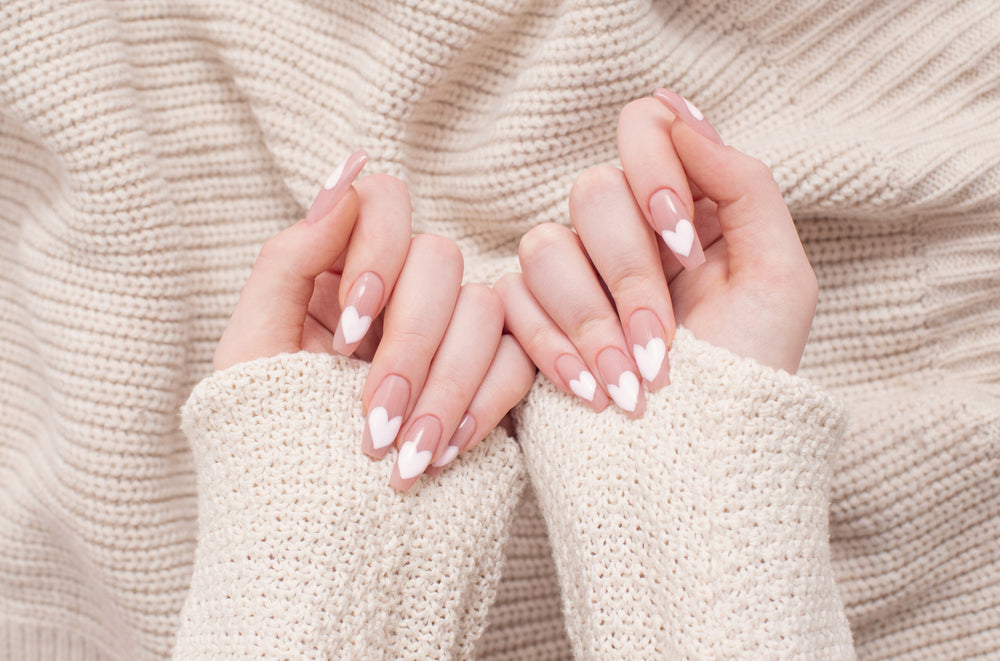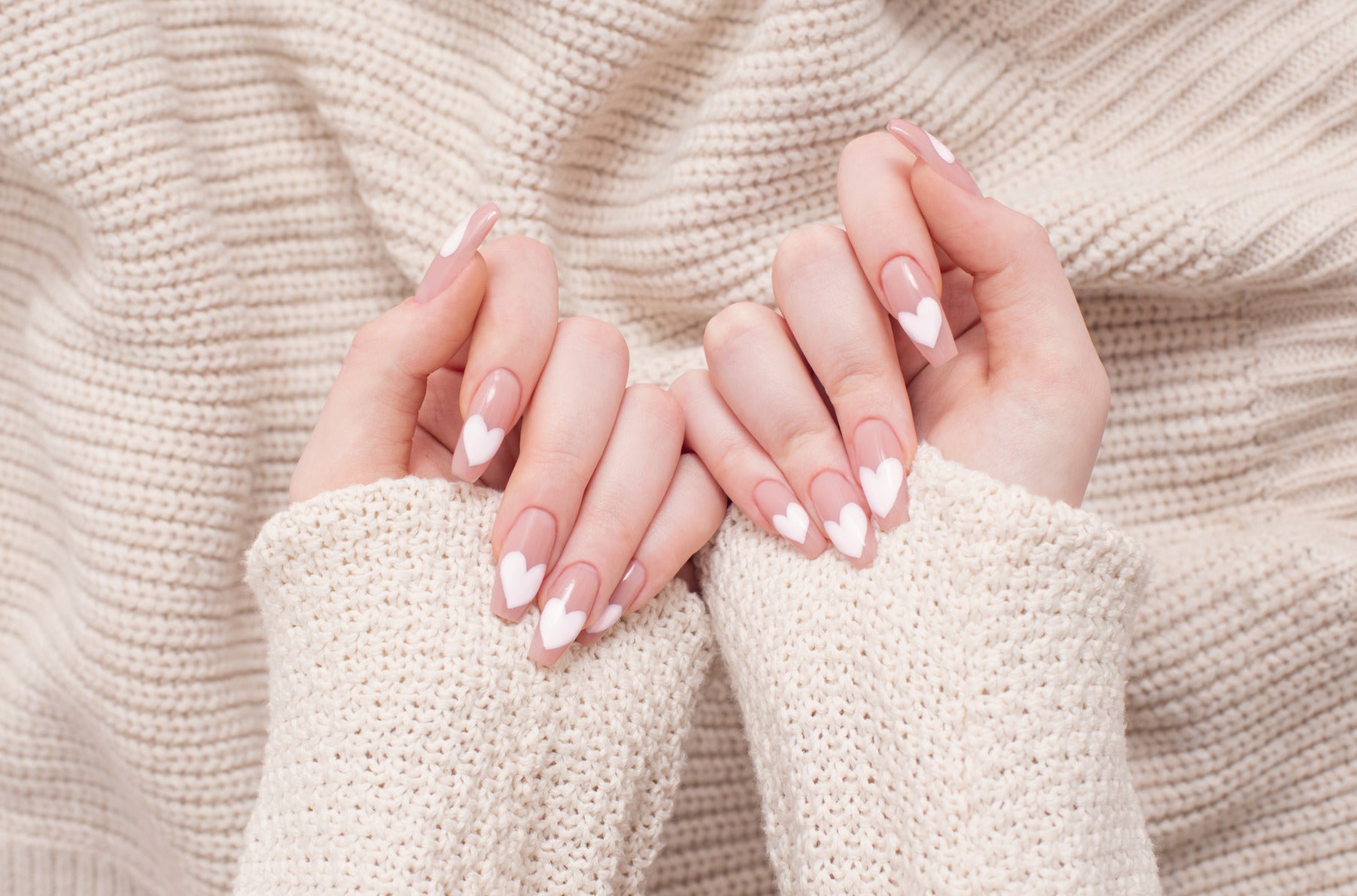Tips for Perfect Gel Polish Curing
Gel polish has revolutionised the nail industry. It offers a long-lasting, chip-resistant shine that clients love.
However, achieving the perfect gel polish application is not just about the colour or design. It's also about the curing process.
Curing is the step that hardens the gel polish. It involves using a special nail lamp, either UV or LED. The correct curing time is crucial for a durable and glossy finish.
But what is the right gel polish curing time? How does the type of lamp affect it? And how can you ensure a perfect cure every time?
This guide will answer these questions and more. It's designed to help aspiring nail technicians master the art of gel polish curing.
So, let's dive in and learn how to achieve flawless gel polish applications.
Understanding Gel Polish Curing
Proper gel polish curing is essential for durability. Curing solidifies the gel and locks in the colour. It ensures a robust and shiny finish that can withstand daily wear.
The right curing process prevents common issues like peeling or chipping. This involves applying the polish in thin layers and using the correct nail lamp. Timing is critical too. Each step affects the final result, so understanding each aspect is vital.
UV vs. LED Lamps: Curing Times and Differences
UV and LED lamps are both used for curing gel polish. Each has unique benefits and timing. UV lamps take longer, usually around two minutes per coat. They can cure all types of gel polish.
LED lamps, in contrast, offer a faster curing time. They cure most gel formulas in about 30 seconds. However, not all gels are compatible with LED lamps.
Choosing between UV and LED depends on your polish and preferences. Consider also the lamp's wattage, which can impact curing times. Higher wattage means faster curing. Ensure that your lamp is suitable for the gel polish you use to avoid under-curing.
The Science Behind Gel Polish Curing
The curing process is driven by photoinitiators in gel polish. These molecules react to the light from nail lamps. This reaction converts the gel from liquid to solid.
The photoinitiator type dictates the required light source. UV light penetrates deeper, while LED targets specific wavelengths. This science is why curing times and lamp types matter so much.
Understanding this process helps prevent mistakes. It helps you know why a particular method works best. This knowledge empowers you to make informed choices for the best results.
Preparing for Gel Polish Application
Preparation is key to successful gel polish application. Properly preparing the nails ensures a smoother finish and longer wear. Begin by thoroughly cleansing the nails. This removes oils and debris, which can prevent adhesion.
Shape the nails to your desired length and style. Use a file to smooth edges. Next, gently buff the nail surface to improve polish grip. This step is crucial for longevity.
Dehydrating the nail plate helps with polish adherence. Use a cleanser or alcohol wipe. This also helps in reducing lifting. A well-prepared nail is a strong foundation for gel polish.
Nail Preparation and Importance of Cleanliness
Start with spotless nails for best results. Wash hands thoroughly to eliminate dirt. Any residue left behind can impede the gel polish's effectiveness.
Push back cuticles gently. Use a cuticle stick to reveal more nail surface. It’s an essential step for a neat finish and proper polish application.
Buffing the nail surface lightly creates a slight texture. This helps the gel polish adhere better. Avoid aggressive buffing to prevent nail weakening. Cleanliness here sets the stage for a successful gel application.
Applying Base Coats and Top Coats
The base coat is the foundation of your gel manicure. It helps the colour coat stick and protects the nails. Apply it in a thin, even layer to avoid flooding the cuticle.
The top coat is what seals and protects your design. It provides shine and durability. Like the base coat, apply it evenly to ensure full coverage.
Cure each layer according to product instructions. This ensures each coat is properly set. Follow the manufacturer's guidelines to avoid issues like peeling or bubbling. Proper application of these layers is key to a professional finish.
Step-by-Step Guide to Curing Gel Polish
Curing gel polish correctly requires precise steps for perfect results. Begin by applying a thin layer of gel polish. Thin coats cure better than thick ones.
Place your hand under the nail lamp immediately. Make sure each nail is exposed to the light evenly. Follow the cure time recommended by the polish manufacturer.
Once cured, apply a second layer of polish. Again, keep it thin to ensure even curing. Repeat the curing process, taking care to cover all nails.
Finish with a top coat to protect the polish. Cure it under the lamp as instructed. This final step secures the polish, providing shine and durability.
Applying Thin Layers for Even Curing
Thin layers are crucial for even curing of gel polish. They ensure that the light from the nail lamp penetrates every part of the polish. If the gel polish is too thick, it might not fully cure, causing lifting.
Start with the brush near the middle of the nail. Spread the polish toward the edges with gentle strokes. This technique helps avoid thick patches.
Apply multiple thin layers rather than one thick one. This allows each layer to cure thoroughly. Even curing minimises issues such as peeling and uneven surfaces.
Proper Hand Placement and Lamp Maintenance
Correct hand placement under the lamp is vital. Align your fingers properly inside the lamp to ensure each nail gets the same exposure. Avoid overlapping nails, which can lead to uneven curing.
Keep the lamp's bulbs or LEDs in good condition. Regular maintenance helps achieve consistent results. Replace any lights that are dim or flickering.
Clean the lamp regularly to remove dust and debris. A clean lamp allows the light to reach nails effectively. Proper maintenance extends your lamp's life and ensures continuous quality performance.
Testing for Complete Curing
After curing, it's important to test if the gel polish is fully set. Gently tap a nail with a finger. It should feel hard and not sticky.
Look for a glossy finish, which indicates proper curing. A dull surface may suggest incomplete curing, and you may need to cure longer.
Be cautious about adding extra curing time. Over-curing can lead to brittleness or discolouration. Always follow the recommended curing times as a guide for accurate results.
Troubleshooting Common Curing Issues
Issues in gel polish curing can undermine your efforts. Identifying and solving these problems helps maintain quality. Address issues promptly to prevent recurring mistakes.
Start by checking the nail lamp's functionality. Ineffective lamps often lead to curing challenges. Ensure your lamp's bulbs or LEDs are working optimally.
Consider the gel polish brand and formulation. Some require specific curing times or lamp types. Always follow the manufacturer's guidelines for best results.
Addressing Under-Curing and Over-Curing
Under-curing happens when polish doesn’t fully harden. This can cause polish to lift or chip. Make sure you are using the right lamp and curing times.
Test the lamp’s wattage and position for adequate exposure. If the polish remains sticky, extend the curing time slightly.
Over-curing, on the other hand, can lead to brittleness. Too much light exposure can discolour or weaken the gel. Stick to recommended times, adjusting only as needed.
Handling Wrinkles, Bubbles, and Color Changes
Wrinkles and bubbles in gel polish are common issues. They often occur due to thick layers or improper curing. Always apply thin, even coats for the best finish.
If wrinkles or bubbles arise, consider reapplication. Cure each layer properly, allowing full exposure. This ensures a smooth, flawless appearance.
Color changes can result from incorrect curing or poor quality gels. Double-check your curing equipment settings and use reputable gel products to maintain color integrity.
Safety and Best Practices
Ensuring safety during gel polish application is essential. Safe practices prevent health issues for clients and technicians. Prioritise care and caution in every step.
Frequently inspect your tools and equipment. Maintain them in good condition for optimum performance. Keeping your workspace clean minimises hazards and enhances professionalism.
Educate clients on aftercare and potential risks. Empower them with knowledge to maintain their manicure's health and longevity. This builds trust and showcases expertise.
UV Exposure and Skin Safety
Repeated UV exposure can pose skin risks. Protect your skin by using fingerless gloves or sunscreen. These reduce potential UV-related damage.
Choose a nail lamp with minimal UV emissions. Modern LED lamps offer safer alternatives. They effectively cure gel polish with reduced radiation.
Always inform clients of UV safety measures. Encourage them to adopt protective strategies. This promotes safety and ensures a positive salon experience.
Ventilation and Salon Environment
Proper ventilation in salons is crucial. It helps disperse fumes and improves air quality. This creates a healthier environment for everyone.
Ventilation systems should be well-maintained. Regular checks ensure they function effectively. Position fans or air purifiers to enhance airflow.
Organise the workspace to minimise clutter. A tidy area reduces accidents and boosts efficiency. A well-ordered salon is inviting and comfortable for clients.
Advanced Tips and Continuing Education
Mastering gel polish techniques involves ongoing learning. Stay curious and engaged with the latest nail trends. This will elevate your skills and client satisfaction.
Attend workshops and online courses regularly. These platforms offer fresh insights and refine your techniques. Networking with peers also enriches your professional journey.
Embrace a mindset of continuous improvement. Experiment with new styles and methods. This keeps your services dynamic and appealing to clients.
Staying Updated with Industry Standards
Industry standards evolve constantly. Keeping abreast of changes ensures compliance and excellence. It also helps you deliver top-notch services consistently.
Join professional nail organisations for updates. These groups offer resources and news on emerging trends. Subscriptions to industry magazines can also be insightful.
Commit to regular learning and certifications. Advanced courses keep your skills sharp. This dedication sets you apart as a knowledgeable nail technician.
Exploring Nail Lamp Technology and Innovations
Nail lamp technology is advancing rapidly. Innovations offer efficient and safer curing options. Understanding these can improve your service quality.
Research the latest lamp models and their features. New lamps focus on speed and safety enhancements. Opt for devices that suit your specific needs and preferences.
Experiment with multi-cure lamps for versatility. These lamps accommodate various gel types. Embracing new tools can modernise your services and delight clients.
Conclusion and Final Checklist
In conclusion, mastering gel polish curing requires attention to details. By following the proper techniques, you ensure beautiful and long-lasting results for your clients.
Every step counts, from preparation to curing times, and even post-care. Each plays a role in the final appearance and durability of the manicure.
Use this checklist as your guide. Always adhere to recommended curing times and maintain your tools. This ensures both consistent and professional outcomes for every client.
FAQ Section
How long should gel polish cure under a UV lamp?
It typically cures within 2-3 minutes depending on the polish brand and lamp wattage.
What happens if the gel polish is under-cured?
Under-cured polish can lead to smudging and lifting. It may also compromise the durability of the manicure.
Can LED lamps cure all types of gel polish?
No, some gels require UV light specifically. Always check the product instructions for compatibility.
Recommended Nail Lamps and Products
Investing in quality nail lamps and products enhances your service quality. Look for lamps with adjustable timers and at least 36 watts for effective curing.
Popular options include the Belle Beauty nail lamp, known for its quick curing times. It's ideal for both professionals and enthusiasts.
For gel polish, consider brands like Belle Beauty, which is renowned for their vibrant colours and durability, ensuring client satisfaction.






